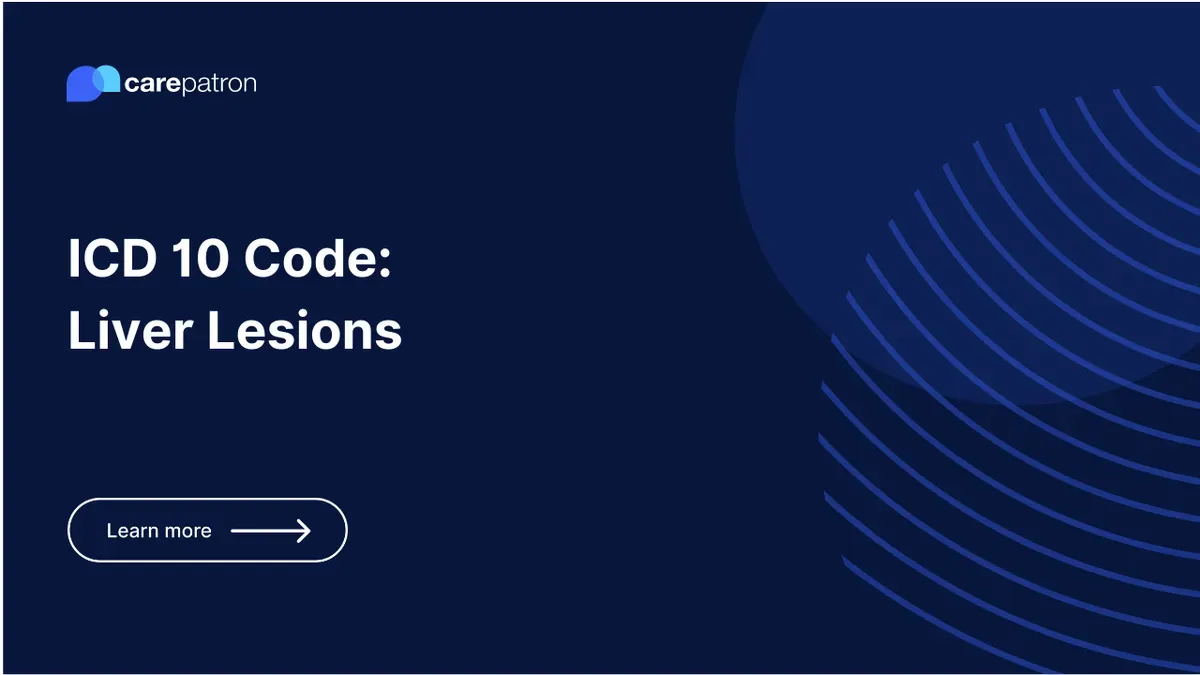
Liver Lesions ICD-10-CM Codes | 2023
Discover the accurate ICD-10-CM codes for liver lesions, aiding in precise diagnosis and classification. Simplify coding with comprehensive information.
Use Code
Commonly asked questions
Common symptoms may include abdominal pain or discomfort, hepatomegaly (enlarged liver), jaundice (yellowing of the skin and eyes), unexplained weight loss, fatigue, and changes in appetite.
Diagnostic evaluation typically involves imaging studies such as ultrasound, CT scan, or MRI. Sometimes, a liver biopsy may be necessary to obtain a definitive diagnosis.
Treatment approaches depend on the underlying cause of the liver lesion and may include watchful waiting, medication, surgical removal, ablation techniques, embolization procedures, or liver transplantation.
EHR and practice management software
Get started for free
*No credit card required
Free
$0/usd
Unlimited clients
Telehealth
1GB of storage
Client portal text
Automated billing and online payments
